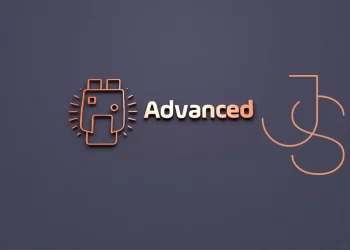Python, Java, and C++ often take the spotlight, and people are mostly obsessed with these languages.
Exploring new things might open new perspectives, making our lifes easier and more convenient for our work; programming languages are no exception.
Today, I’ll talk about several lesser-known programming languages that offer unique advantages, simplicity, and effectiveness.
These languages might not be as popular, but they can significantly enhance your programming skills and broaden your problem-solving toolkit. Here are five such programming languages that are easy to learn and highly effective.
Table of Contents
1. Lua: The Lightweight Scripting Language
Lua is a lightweight, high-level scripting language designed for embedded use in applications. It’s widely known for its simplicity and performance.
Key Features
- Lua’s syntax is straightforward and minimalistic, making it accessible for beginners.
- It’s fast and efficient, ideal for embedded systems and game development.
- Lua can be embedded in applications written in other languages like C and C++.
Use Cases
- Game engines such as Unity and Roblox heavily use Lua.
- Because of its small footprint, Lua is perfect for embedded systems and IoT devices.
Resources
Sum of an Array
function sum(array)
local total = 0
for i = 1, #array do
total = total + array[i]
end
return total
end
print(sum({1, 2, 3, 4, 5})) -- Output: 15
2. Haskell: The Purely Functional Language
Haskell is a purely functional programming language with strong static typing. It’s known for its expressive syntax and powerful abstractions.
Key Features
- Haskell encourages a different way of thinking about programming, focusing on functions and immutability.
- The strong type system helps catch errors at compile time, leading to more reliable code.
- Haskell allows for concise and readable code, reducing bugs and improving maintainability.
Use Cases
- Haskell is popular in academia for exploring new programming concepts.
- Its strong type system and functional nature make it suitable for complex data transformations.
Resources
Fibonacci Sequence
fibonacci :: Int -> Int
fibonacci 0 = 0
fibonacci 1 = 1
fibonacci n = fibonacci (n - 1) + fibonacci (n - 2)
main = print (fibonacci 10) -- Output: 55
3. Erlang: The Concurrency King
Erlang is a language designed for building scalable and fault-tolerant systems. It excels in concurrent programming and is used in telecommunication systems.
Key Features
- Erlang’s lightweight process model makes building systems that handle thousands of simultaneous processes easy.
- Built-in mechanisms for error detection and process isolation ensure systems can recover from failures.
- Allows for code updates without stopping the system, which is crucial for high-availability systems.
Use Cases
- Used by companies like Ericsson for building robust telecommunication infrastructure.
- The backbone of messaging platforms like WhatsApp.
Resources
Check Prime Number
-module(prime).
-export([is_prime/1]).
is_prime(2) -> true;
is_prime(N) when N > 2 -> is_prime(N, 2).
is_prime(N, D) when D * D > N -> true;
is_prime(N, D) when N rem D == 0 -> false;
is_prime(N, D) -> is_prime(N, D + 1).
% To run: prime:is_prime(7). -- Output: true
4. Julia: The High-Performance Numerical Computing Language
Julia has been designed for high-performance numerical and scientific computing. It combines the ease of use of Python with the speed of C.
Key Features
- Julia’s compilation, rather than interpretation, gives it a performance edge.
- Its syntax is simple and intuitive, similar to Python.
- Designed with numerical and scientific computation in mind, Julia excels in tasks that require high precision.
Use Cases
- Julia is becoming increasingly popular in data science for its speed and efficiency.
- Ideal for complex simulations and numerical analysis.
Resources
- Julia Lang Documentation
- Julia Programming for Operations Research by Changhyun Kwon
- Introduction to Julia on Coursera
Sorting an Array
function bubble_sort(arr::Vector{Int})
n = length(arr)
for i in 1:n-1
for j in 1:n-i
if arr[j] > arr[j + 1]
arr[j], arr[j + 1] = arr[j + 1], arr[j]
end
end
end
return arr
end
println(bubble_sort([5, 2, 9, 1, 5, 6])) -- Output: [1, 2, 5, 5, 6, 9]
5. Racket: The Programmable Programming Language
Racket is a descendant of Scheme and is a general-purpose, multi-paradigm programming language. It’s particularly noted for its emphasis on language creation and experimentation.
Key Features
- Racket makes it easy to create domain-specific languages.
- It comes with extensive libraries for various tasks.
- Often used in educational settings to teach programming concepts.
Use Cases
- Used for creating new programming languages and experimenting with language design.
- Popular in computer science courses for teaching fundamental programming principles.
Resources
Find Maximum in a List
#lang racket
(define (max-in-list lst)
(if (null? (cdr lst))
(car lst)
(let ([max-rest (max-in-list (cdr lst))])
(if (> (car lst) max-rest)
(car lst)
max-rest))))
(display (max-in-list '(3 5 2 9 4))) -- Output: 9
Conclusion
I hope exploring these lesser-known programming languages can open up new avenues for your development skills and problem-solving approaches.
Let’s experiment; maybe any of these can become your next favorite programming language. Happy Coding!
🚀 Before You Go:
- 👏 Found this guide helpful? Give it a like!
- 💬 Got thoughts? Share your insights!
- 📤 Know someone who needs this? Share the post!
- 🌟 Your support keeps us going!
💻 Level up with the latest tech trends, tutorials, and tips - Straight to your inbox – no fluff, just value!


















